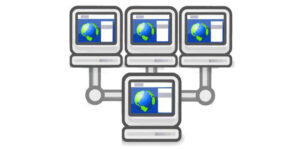
Creating a Successful Telecommuting Policy Post-Pandemic
A survey from Pew Research Center found that the vast majority of remote staffers think working from home is somewhat or very easy. In that study,

A survey from Pew Research Center found that the vast majority of remote staffers think working from home is somewhat or very easy. In that study,
3 Honest Truths About This Profession If there’s a lesson to be learned about telecommuting, is that it’s not for everyone. And why should it

Remote work is on a roll. But it takes more than home offices and an internet connection to succeed. What really matters? The TalentCulture community weighs in

Virtual teams make great business sense. But before you unleash your workforce, it pays to develop a coordinated technology plan.

Remote work isn’t a new concept — but its popularity is skyrocketing. What can employers do to ensure that virtual teams are truly successful?

Telecommuting success isn’t a slam dunk — but the business benefits can be significant. What should employers consider?

Next-generation leaders have landed, with technology as a constant companion. What should we expect for the future of business?

Flexible work: The concept is decades old, but technology and cultural changes are making alternative schedules and locations more viable. Take a closer look with #TChat
How can you stay ahead of the curve in today’s job environment? After a week of TalentCulture community discussion, I’m reminded that the key is not how fast or how elegantly your career moves forward – it’s how many others you bring along for the ride.
Let’s face it. Workgroups aren’t what they used to be. Odds are that half the members of any team aren’t employees – and many don’t have offices in the same city – let alone the same building. In an increasingly remote, fluid workforce, how can we ensure cohesive workflow and stellar results?